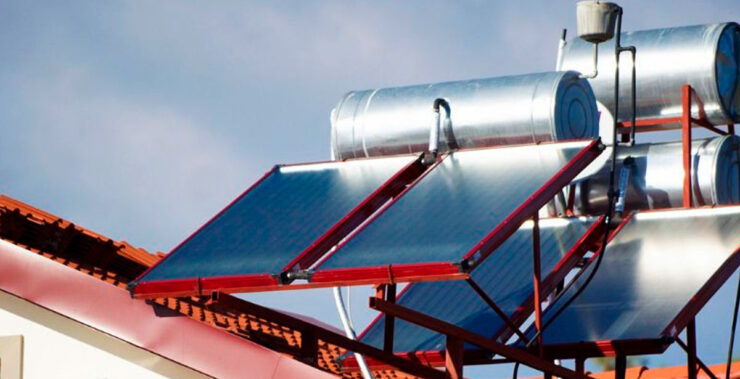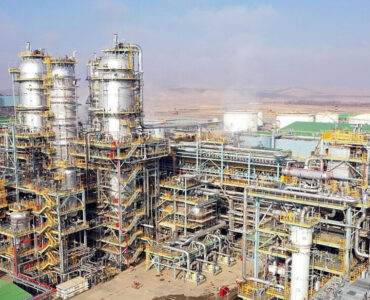A new report “Toward a Framework for the Sustainable Heating Transition in Europe and Central Asia” by the World Bank provides the results of the analysis of the heating sector of 23 developing countries of the Europe and Central Asia (ECA) region, including Turkmenistan. The report provides an overview of the current state of heating systems in the region, and emphasizes the importance of a transition towards sustainable heating.
The report defines “sustainable heating” as heating that is affordable, reliable, efficient, low-emission and compliant with the carbon neutrality goals. Sustainable Heating Transition is a crucial part of the decarbonization efforts and the challenges should be addressed by the governments and the policy makers of the region. Between 21.4 billion and 24.7 billion USD worth of investments in building renovations and heating system replacement will be needed in Turkmenistan. Despite high capital investment requirements, delays and inaction will have even more devastating effects both financially, but also in terms of environment and energy security.
The current state of the heating sector in Central Asia
The heating sector of the region remains highly unsustainable due to the heavy reliance on fossil fuels and polluting biomass and coal-fueled stoves. Around 95% of the heating demand in the region is supplied by natural gas, coal, and traditional biomass. However, the fuel mix variations across the countries are significant, with coal and natural gas as the primary heating fuels in Central Asia. Turkmenistan is almost exclusively reliant on natural gas along with several other countries in the region.
It is estimated that buildings in the region consume 2-3 times more energy per m2 than buildings in Western Europe. The region’s average specific energy consumption for space heating is 180 kWh/m2. However, while estimates are available for most countries of the region, no information and statistics are reported on Turkmenistan.
The report provides details on the building stock such as shares of residential, commercial, and public buildings, as well as the number of single-family homes and multifamily apartments for 22 out of 23 countries. The Central Asian region has been characterized by slow urbanization, with only 3% increase (from 45% to 48%) between 1990 and 2020. However, no country-level data is available for Turkmenistan. The building stock of the region is reportedly very inefficient, has been poorly maintained, and most of the buildings are more than 40 years old.
Issues associated with aging, inefficient, and unsustainable heating systems
Apart from low energy efficiencies, many countries within the ECA region depend on fossil fuel imports and the poorest households are the most burdened by high energy bills. The report shows that ~34% of the region’s population spend more than 10% of their average monthly expenditure on energy bills, which is considered a typical threshold for energy poverty. While the data is available for 18 countries of the region, no estimates are available for Turkmenistan.
In addition, the health of the region’s population is highly impacted by severe pollution levels. Around 302 thousand deaths and 305 billion USD are estimated to be caused annually by air pollution in the region. Almost 50% of the fine particulate matter emissions are caused by individual heating, due to fuels with high emissions and inefficient appliances.
Costs of different individual heating options
The report emphasizes the importance of performing an economic analysis for each specific location to determine the most economic heating fuel and technology, and the subsequent policies and programs by the governments to support these technologies. The report found that electric heaters might be the lowest cost option for urban multifamily apartment buildings in Kyrgyzstan, whereas in the case of Uzbekistan condensing gas boilers might be the most economical. The lowest heating costs for single-family houses in Kyrgyzstan were found to be from electric heaters or air-to-air heat pumps, and condensing gas boilers are found to be the most economical for Uzbekistan. No cost analysis has been performed for Turkmenistan.
Future investments in Turkmenistan
According to the report, the Europe and Central Asia region would require trillions of USD of investments for the sustainable heating transition. The study assumed that 3.5% of eligible building stock and heating systems will be renovated every year until 2050. Eventually, the goal is to renovate 95% of the building stock of the region. Building renovations include renovations of doors and windows, external walls, and introducing thermal insulation to the roof and ceiling. These measures aim to decrease the energy consumption of buildings. Energy efficiency improvements are achieved by replacing old heating systems (traditionally based on fossil fuels such as natural gas, oil, and coal) to modern more efficient and less-polluting technologies such as heat pumps and eco-design wood boilers.
Specific investment requirements for Turkmenistan have been highlighted:
For instance, scenarios with some renovations but limited heating system replacement would require more than 12 billion USD for building renovation and almost 9.4 billion USD for heating system replacement in Turkmenistan alone. In a highly energy efficient scenario with higher rate of heating system modernization these costs would rise to 20 billion USD and 4.7 billion USD, respectively. The total reported costs include fuel savings due to heating system improvements, CO2 emission reductions, and account for achieved health benefits due to pollution reduction.
The report outlines the main conclusions as follows:
- Current heating systems in ECA are not sustainable.
- Many countries within the region do not have plans and institutional infrastructure to develop and support the sustainable heating transition.
- Energy price reforms are crucial, with the phase-out of fossil fuel subsidies and other subsidies for electricity and district heating.
- Energy efficiency improvements are needed to reduce the heating demand by 2050.
- District heating should be supported in locations where it is economically viable, but should be phased out where it has had a poor historical performance.
- Location-specific least-cost heating options should be identified and supported by the government.
- Technical standards for heating equipment should be raised.
- Programs on directing public funds to overcome the market barriers and support the transition should be developed.
Finally, the report highlights that coal is increasingly uneconomic and should be phased out of the heating systems. Natural gas may continue playing an important role due to the high cost of lower-emission technologies.






